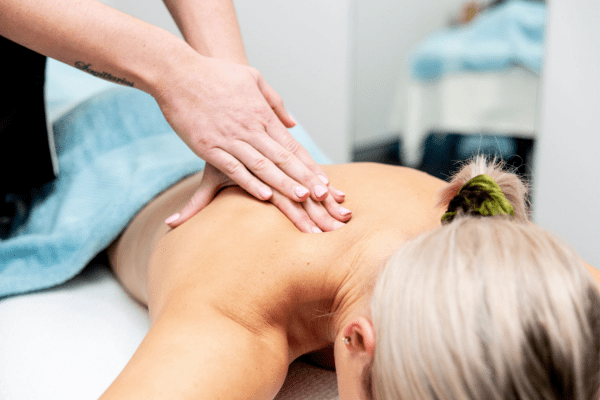It’s no secret that your body undergoes remarkable changes throughout pregnancy. While necessary for accommodating your growing baby, these changes may make you uncomfortable.
From lower back discomfort to your aching pelvis, experiencing discomfort in pregnancy is common. But that doesn’t mean you just have to put up with it.
Physionorth‘s physiotherapists care for expectant mums throughout their pregnancy and beyond.
Musculoskeletal changes during pregnancy
While some pregnancy changes will be obvious to you, like your swelling tummy and sudden sensitivity to strong smells, you might not be aware of a few changes behind the scenes.
- Hormonal Shifts- During your pregnancy, your body will undergo significant changes to your hormone levels, including progesterone, oestrogen and relaxin. The hormone relaxin causes your joints to become lax, which allows your baby to pass through your pelvis during birth. Unfortunately, this laxity can cause pubic symphysis and sacroiliac pain during pregnancy for some.
- Postural Adjustment- As your baby grows, your centre of gravity shifts to accommodate the weight. As a result, we tend to lean back to balance the extra weight carried on our front. This shift may disrupt the natural curvature of your spine, potentially causing pain and discomfort.
- Pelvic Floor Changes- Your pelvic floor is a band of muscle that supports your pelvic organs, including your bladder, uterus and bowel. It helps you control your bladder and bowel. During your pregnancy, the weight of your baby, as well as the amniotic sac and placenta, put additional downward pressure on your pelvic floor, which may weaken the muscles. That, plus the hormonal changes mentioned above, may contribute to some urinary incontinence, urgency or, less commonly, faecal incontinence. For some, it could also contribute to pelvic organ prolapse.
Pain in pregnancy
Some other common pains that may result from pregnancy-related musculoskeletal changes can include:
- Pain or tingling in the hands, wrists or forearms
- Lower back pain
- Pelvic discomfort
- Rib pain
- Muscle cramps
- Neck pain and stiffness
- Thoracic pain and stiffness
- Shooting pains, numbness or pins and needles in the arms or legs
How might physiotherapy help?
At Physionorth, we believe that an individually tailored physiotherapy treatment plan may offer relief from various uncomfortable pregnancy symptoms. We can work with you to manage your symptoms, enhance mobility, and make your pregnancy journey more comfortable.
What does physiotherapy in pregnancy involve?
Your physiotherapist will first assess your condition, aiming to understand your symptoms and what is causing them. They will work with you to develop realistic goals for your treatment and then tailor a plan of treatments and exercises to help improve your movement and comfort during your pregnancy.
Some common treatments your physiotherapist might use to help reduce the symptoms of musculoskeletal changes in pregnancy include:
- Posture correction advice.
- Joint manipulation.
- Taping, supportive belts or compression pants.
- Exercise recommendations to strengthen your pelvic floor and abdominal muscles.
- Heat or cold therapy to manage pain.
- Guidance relating to activities, movements or positions which should be avoided.
- Massage stretches or ultrasound therapy to help lessen pain.
Your physiotherapist could also help you prepare for labour and delivery by guiding exercises and techniques that may help prepare your body. These exercises may improve your strength and flexibility in the muscles and joints involved in childbirth or breathing and relaxation techniques that might help during labour.
Why choose Physionorth?
Musculoskeletal changes in pregnancy are a natural part of the journey to motherhood. Our Physionorth physiotherapists are here to help you address these challenges.
To find out more, please contact us today.
*All information is general in nature and is not intended to be a substitute for professional medical advice. Physionorth can consult with you to confirm if this advice is right for you.
References:
Australian Physiotherapy Association. (2023). Choose Physio for Pre and Post Natal. https://choose.physio/your-lifestage/motherhood/pre-and-post-natal
Physiopedia. (n.d.). The Biomechanics of Pregnancy. www.physio-pedia.com/The_Biomechanics_of_Pregnancy
Physiopedia. (n.d.). Physiological Changes in Pregnancy. www.physio-pedia.com/Physiological_Changes_in_Pregnancy


